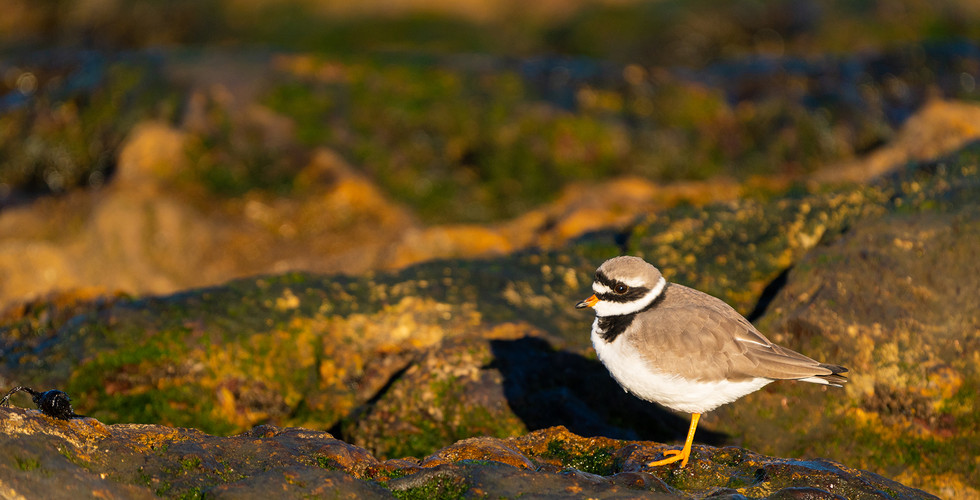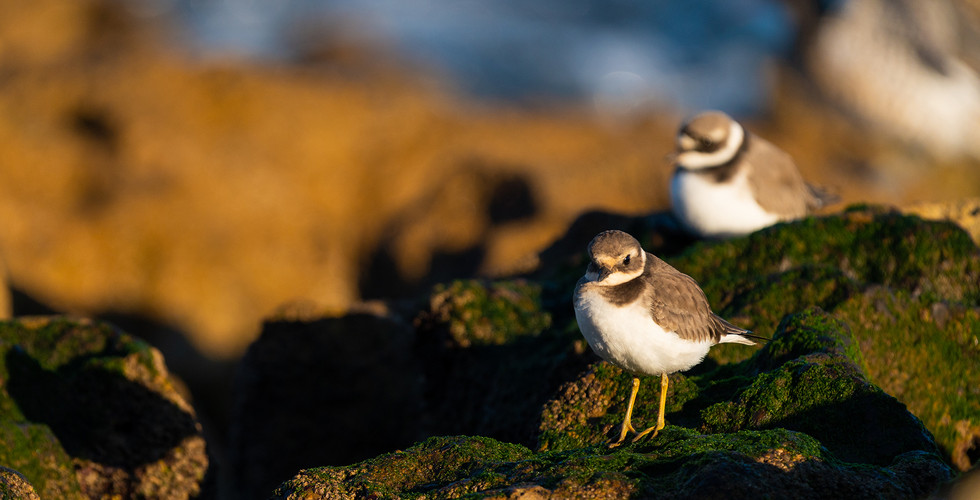4 Species to Photograph on the Oeiras Boardwalk
- Diogo Oliveira
- Feb 22, 2024
- 5 min read
The Oeiras Boardwalk area is an excellent place to stroll on that sunny Sunday, however, it is also an excellent place to photograph coastal birds in the Lisbon area. Yes, there are places where we can observe more species but our objective is to take photographs and there is nothing better than a place where there are always a lot of people to photograph them, as they end up getting used to the presence of human beings and allow for a shorter safety distance, in some cases even come to us to see if we have any food. Here is a small guide to photographing some species on the Oeiras Promenade, be aware that there are more species there, I only focused on those that were easy to photograph and the way I approached each species.
DETAILS
Starting Point: INATEL Gate
Distance to Cover: About 2 km
Time of year: Winter and spring
Best time of day: End of the day
Recommended Material: Camera + telephoto lens above 400mm
Extras: It must be low tide
HOW TO GET
There are several access points to the Oeiras promenade, however, I prefer to enter as close to the rocks as possible. The starting point is located on Rua Aljubarrota, Oeiras, to get there you can enter the following coordinates into the GPS: 38°40'49.9" N 9°18'57.9" W or 38.680533, -9.316087, or follow the link to the google maps.
RECOMMENDED ROUTE
The idea is to walk along the coastal area looking for birds to photograph. I like to walk along the promenade towards the east so that the sun is as much on my back as possible. In other words, starting from INATEL to Santo Amaro beach. When I manage to get there, if I find birds in favorable locations along the way, I end up spending the entire session photographing them. I like to photograph birds at eye level, and that involves going down to the rocks. Most of the time I prefer to sit on the path the birds are taking so as not to actively chase them. This involves a few minutes of sitting in the same place while they roam around looking for food.
MY EXPERIENCE
The birds are quite accustomed to human presence, the Oeiras promenade area is always full of people moving back and forth, and even some fishermen who also like to seek their luck in those places. This ends up 'forcing' the species to stay close to humans, which gives us an advantage because we can photograph them very close to us. Below I will explain in detail each of the species that I photographed at the site.
RUDDY TURNSTONE
As soon as I arrived I found several Ruddy turnstones (Arenaria interpres) on the rocks near the first descent, of course I didn't hesitate in going down to photograph them. But I had a big problem, they thought I was going to give them food and that's why they came to me! They were so close that I couldn't even photograph them with the Sony 200-600. And I ended up photographing and filming with my cell phone. I really enjoyed this interaction and ended up spending about an hour photographing them.
SANDPIPER
The sandpiper (Calidris alba) is perhaps one of the cutest birds in this group, especially in the contrast between the white and the dark rocks. You must be careful when configuring the camera so as not to end up with burnt whites due to this high contrast. And they need to have a lot of patience, the fact that they like to move in groups means that all it takes is one to get scared and take off for the rest to follow. It's really essential to choose a good place to wait for them, that's how I managed to photograph them.
PURPLE SANDPIPER
Who said I could find purple sandpipers (Calidris maritima)? It was very complicated, not only because of their coloring but because they like to choose shadow areas which makes it even more difficult! And even in photographs we end up having to use a higher ISO or if we get distracted what happens is that we have very low speeds to get a good photograph, as they don't stay exactly still. I had some luck, because when I was photographing the sandpipers the fisherman decided to turn away and pushed the sandpipers towards me, so that in this first photograph he was really close and at the edge of focus. Then he passed by my feet and continued on his way, passing through the sun and to a place where I couldn't photograph him. In the rest, it was once again patience, waiting for them and when they peeked over the rocks you could take some photographs.
COMMON RINGED PLOVER
The last bird was the Common Ringed Plover (Charadrius hiaticula), and I confess that it was the most annoying to photograph as it was the one that always stayed away from everything and everyone, and remained quiet in the same place for a long time. In other words, the technique of waiting for him was not working. I then had to try a more complicated approach, as it involved walking through the slippery rocks with a machine and backpack on my back. A risk, he could fall and break the lens, but luckily everything went well. The starting point is to always stay hidden, in order to get closer without the bird seeing me. When I was at a distance that I considered enough for him not to run away I started taking photos, but with some luck the place he chose was relatively close to the sea and a stronger wave came which forced him to run away closer to me, thus finally managing to take the photographs.
I hope you enjoyed this short guide to 4 species that you can photograph on the Oeiras promenade. Remember to check the weather conditions carefully so you don't get scared, and try to photograph the birds calmly and without rushing. Visit this place and share the photos.
WANT TO LEARN MORE ABOUT PHOTOGRAPHY?
When we're photographing, it's easy to lose track of what we should or shouldn't focus on, whether it's the most common species or the rarest, whether we're trying to photograph during the day or at night. I created some articles to show you what you can look for in certain places to photograph.
Find out which species to photograph during your visit to Tapada de Mafra: 3 Species to Photograph in Tapada de Mafra
Find out when to photograph different species of birds on the coast of Oeiras: 4 Species to Photograph on the Oeiras Promenade
SEE MY VIDEOS ON YOUTUBE
I created several videos about wildlife photography where I explain how to photograph different species and also some of the best photographic techniques. From photographing coastal birds to photographing the beautiful kingfisher, it's a little playlist that I hope you enjoy and leave a like on the videos.
Did you know you can learn more about photography with me in the field?
Check out the ONWILD page to stay up to date with all destinations, events and workshops! They can also learn more about photography and get to know other countries.




































































Comments